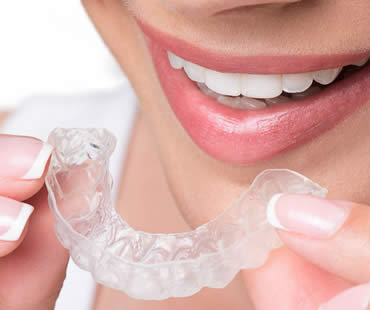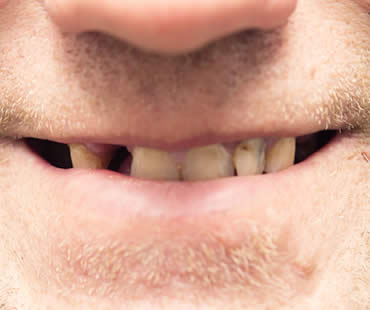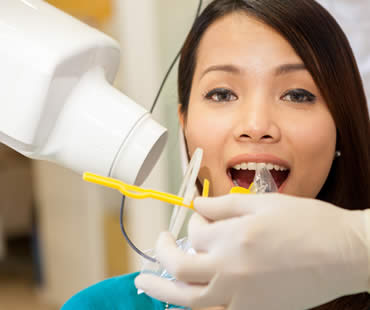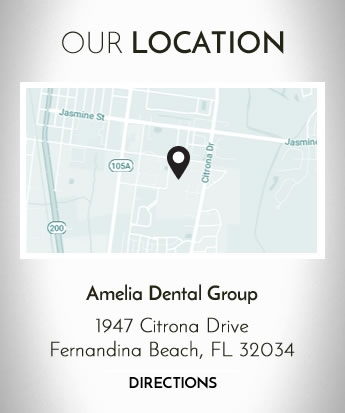
Does your child need braces, but isn’t sure about being a “metal mouth” for two or more years? Did your teen come to you and beg for some other option to traditional braces? Perhaps you’ve heard about Invisalign aligners but are wondering if they’ll work for your child. Invisalign is absolutely appropriate for your teen if all of his or her baby teeth have fallen out and adult teeth have erupted.
Invisalign provides the same results as traditional metal braces, but without the metal brackets. Concerns over eating with braces are removed with the Invisalign trays, as they come out for meals, leaving your teen free to eat any food he or she desires.
Invisalign utilizes clear plastic trays that allow the process of straightening your teen’s teeth to be less obvious and less obtrusive. Beginning with x-rays and molds, your orthodontist will make a series of trays, called aligners. These trays are worn most of the day, taken out only to eat or to be cleaned. The process of straightening happens gradually and comfortably.
It is essential during this time that the trays are worn as recommended by the orthodontist. Wearing them less than the recommended amount of time will result in slower correction, and has the potential to lengthen treatment. Have your teen continue with any established good oral hygiene habits. Brushing and flossing must continue on a regular basis, brushing twice a day at minimum and flossing before bedtime.
Being a teenager is full of difficulties, and it is during this time that teens are at their most self-conscious. Adding metal braces to this transition can make everything worse for your child, leaving him or her self-conscious about eating with friends or smiling, talking or laughing in public. Your teen’s gapped, misaligned or crowded teeth can be improved significantly with Invisalign trays. Talk to your orthodontist today to see how Invisalign can make a difference for your child.
If you need a dentist in Fernandina Beach contact us today

Your family dentist knows that your child’s pacifier serves an important purpose. It soothes and comforts your child during difficult or stressful events. During the time of infancy, pacifiers are common and valued. Extended use of the pacifier during the development of the teeth, however, can lead to unwanted changes to your toddler’s mouth.
Sucking too hard on a pacifier, just like sucking too long on fingers or a thumb, can have serious consequences to a child’s teeth and even to the shape of the child’s face. Your family dentist will tell you that you should take away your child’s pacifier by the age of two years, preferably by the end of the first year. Failure to stop the use of a pacifier can lead to extended orthodontic care in the future.
Your family dentist can show you research that indicates that pacifier use beyond the second year is linked with crossbites, open bites, misaligned bites, a narrowed jaw, tongue thrust and malformed palate. It is also associated with an increased risk of a middle ear infection.
If your infant is using a pacifier, follow these guidelines:
- Clean the pacifiers regularly and properly to prevent bacterial growth.
- Discard and replace pacifiers that exhibit any signs of discoloration or cracking.
- Clean any new pacifiers prior to giving them to your baby.
- Make pacifiers available only during specific times, such as at naptime or bedtime.
- Purchase pacifiers specifically recommended by orthodontists for minimal damage to the mouth.
- Never allow your baby to “wear” the pacifier by tying it around his or her neck. This is dangerous. Pacifier clips can allow you to clip the pacifier to your baby’s clothing with a short, safe length of material.
Your family dentist will have important tips for you when you begin to wean your child away from pacifiers. Don’t let this habit extend beyond being useful to becoming harmful.
If you need a dentist in Fernandina Beach contact us today

As we age, our birthdays tend to bring new oral health issues along with them. It’s a fact of life that our teeth and gums are impacted by our age. Here are some common problems to watch for, and suggestions for treatment.
Gum disease:
Regular dental checkups and cleanings are vital to avoid gum disease. The first stage is called gingivitis and it’s reversible. If untreated, it can lead to a very serious advanced stage called periodontitis. You may not experience signs of gum disease, so practicing good oral hygiene and seeing your dentist are the best ways to keep it at bay.
Tooth sensitivity:
If cold or hot foods cause you discomfort, you have a common problem called tooth sensitivity. It can result from decay, worn fillings, gum disease, broken teeth, or exposed roots. Your dentist may recommend toothpastes designed to reduce sensitivity, or other treatments based on the cause of your problem. Good oral hygiene can help with sensitivity also.
Missing teeth:
If you are missing any teeth, it not only looks unappealing but it can also affect your ability to eat and speak. Your other teeth may move, and bone loss can occur. Discuss treatment options with your dentist because you might be able to restore your smile. Bridges, implants, and dentures are a few of the dental advances that might help.
Dry mouth:
Medicines and some health conditions often cause your mouth to be overly dry. Having a dry mouth is uncomfortable, but it also can seriously impact your teeth and gums. Without saliva to naturally clean your mouth, the risks of tooth decay and other problems increase. Ask your dentist to look for signs of decay, and to help you identify the cause for your dry mouth. Be sure to tell your dentist about your medical history and medications.
Oral cancer:
Oral cancer can include your gums, lips, cheeks, tongue, jaw, throat, or soft palate. It sometimes begins with just a tiny spot or swollen area, so regular dental checkups can help catch this disease early. A variety of treatment options are available, but early detection makes a difference.
Schedule your appointment at our Fernandina Beach dental office

Your good health depends on taking excellent care of your teeth. Not only does proper dental care protect your oral health, but it also has a major impact on your overall health. Routine brushing and flossing are just the start. Establishing a relationship with a good general dentist is a vital part of taking care of both your dental health and your general health.
The focus of general dentistry is to stop minor dental problems before they become large health issues. While many dentists now offer cosmetic and restorative treatments, the main responsibility of a general dentist is preventative. Treating cavities, performing root canal treatment, and performing regular cleanings and examinations are some of the important things services by a general dentist.
Even if you take vigilant care of your teeth, only a qualified dentist or hygienist can remove the plaque and tartar that forms around and below your gum line. Regular checkups allow your general dentist to detect problems that could potentially lead to more serious issues. Caught in the early stages, potential trouble like gingivitis or periodontitis can be successfully treated before they become bigger concerns. General dentistry procedures like scaling, root planning, and root canal treatment can be used to save infected teeth.
Prevention is the key to a healthy smile. Taking proper care of your teeth at home and keeping a regular schedule of cleaning and exam appointments with your general dentist will go a long way towards saving your smile for years to come.
Our dental office is located in Fernandina Beach

Family dentists can do so much for you and your family. A family dentist is able to perform any other task another dentist can do, but they’re able to perform them on your entire family. The convenience of this service to each member of your family will save you time and trouble. Your family dentist obtains everyone’s complete dental histories, and gives the best treatment possible based on an experienced review of those records.
Because a family dentist recognizes that your time is very valuable, appointments can often be made in blocks so that services can be offered to each member of your family on the same day, near the same time. You can make one trip and be finished with your routine dental checkups, x-rays, cleanings and preventative care for six more months!
Family dental offices also offer cosmetic dentistry services like teeth whitening or porcelain veneers. Dental crowns, dental bridges, fillings and other bonding work can easily be accomplished there. A family dentist also offers root canal treatments, extractions or emergency care.
Your family dentist wants to be a friend of your family for life. Having a dentist who has seen your children’s teeth through their formative years and into adulthood is of huge benefit to your children. As long as your children remain in the area, they will never have to search for another dentist. They will have formed a trusting and comfortable bond with the family dentist, ensuring that good oral hygiene habits will continue into adulthood, as will routine preventative care.
Sedation dentistry is likely to be offered at your family dentist, especially to any patient with a phobia or other anxiety about dental appointments. Even younger patients can benefit from sedation dentistry, allowing them to calm their bodies and to comply with requests by the dentist, keeping everyone safe during treatment.
You are the priority to your family dentist. The relationship that is formed with you and your family is one that your family dentist wants to see last a lifetime.
Our dental office is located in Fernandina Beach

A brighter smile can make a big difference in your appearance. There are lots of choices today for improving your tooth color. Here are details about some of the options so you can decide which way you may want to whiten your smile.
Eliminating the need:
One way to eliminate the need for teeth whitening is to avoid foods and drinks that are known to cause stains. These include items like coffee, tea, red wine, berries, soy sauce, balsamic vinegar, and curry. If you do consume foods that stain, try to brush your teeth as soon as possible before stains can attach to your teeth.
Whitening at home:
There are many products available at your drugstore to help you brighten your smile at home. Whitening toothpastes and mouthwashes are two types of options, although it can take a while to see results from these methods. Whitening strips are a popular choice, which are covered in a bleaching solution and attached to the fronts of your teeth. Depending on the brand and strength, they might be in place from 5 to 30 minutes daily for a week or two in order to achieve the desired results. Overuse of these strips can increase teeth sensitivity, so be careful not to use them too often.
Professional whitening:
Whitening procedures performed at your dentist’s office are usually the fastest and most effective way to spruce up your smile. Custom trays filled with a higher strength bleaching gel may be made to be worn either in the office or at home later. Another method that must be administered in the office involves a bleaching agent applied to your teeth’s surface and then a bright light to speed up the process. You can typically expect dramatic results from this type of professional whitening.
Our dental office is located in Fernandina Beach







